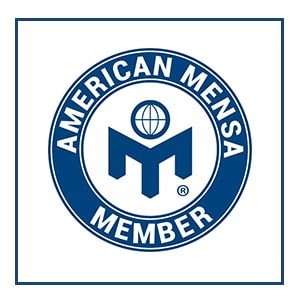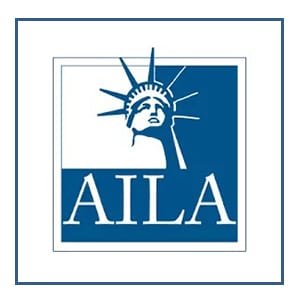I-485 (Adjustment of Status) and CP (Consular Processing)
The Process and Documentation
You finally have
- a I-140 approval through your employer
- an approved I-526 for an investment you made in the US, or
- an approved I-130 for you from your US citizen or green card holder family member, or
You have patiently waited, sometimes for years to get your green card.
You have just one last step before you receive your green card. This is to file for adjustment of status (if you are in the US) or to file for consular processing (if you are outside the US). Once this final step is approved, you will get your green card.
The US government uses this process to make sure that you are a “desirable” alien, that is, you are the type of person we want living in the US. After you file your forms with the supporting documents and pay the fee, the Immigration Service will collect your fingerprints and check your background to make sure that you are not a terrorist or criminal (or a member of the communist party!) They also get a medical report to make sure you do not have a disease that can harm others.
As part of this process, the Service also makes sure that your sponsor can support you financially. If your employer is sponsoring, the employer will need to provide a letter of support. If your family is sponsoring, they will provide copies of their income tax returns. Investors need to prove that they have still invested in the US.
This screening process takes many months, sometimes a year, simply because the Service is very thorough. Your fingerprints are sent to the local police stations. Your birth records are checked against the government registry of birth in your country.
Along with these, there is a long list of questions that you must answer truthfully.
When Can you File
Priority Date has to be current
To be able to file for the last step to obtain your green card, your priority date must be current. The Department of State publishes a Visa Bulletin each month where they publish the cut-off date. You can sign up for the Visa Bulletin at the Department of State’s website. We are also providing a link below to make it easier for you to subscribe.
If your priority date is before the Visa Bulletin cut-off date, you can file for adjustment.
Your Priority Date is
- Family Based: Date your I-130 was filed.
- Employment Based: Date your PERM was filed.
- Self-filed: Date your I-140 was filed.
If your priority date is not before the Visa Bulletin cut-off date, you will need to wait to file this last step till the date becomes current. Depending on who sponsored you, it may take from a few months, to over 15 years, depending on the delays for people from the country you were born in.
Our clients often times ask as to why they have to wait so long to get their green card when others get it so much faster.
There are 2 reasons for this:
Number One: There are different categories under our immigration system. Some categories get preference over other ones.
- For families, it depends on whether a US Citizen is filing or whether the sponsor is a green card holder. US Citizens get faster processing that green card holders. Also, it depends on how close your relationship is to the sponsor. Your relationship with your US citizen wife is considered a lot closer than your relationship with the grown up brother you have only met a few times since he moved to the US. The wife’s case will get priority over the adult brother’s case.
- For employer sponsored petitions, it always depends on your qualifications. The more educated and experienced you are, the higher your preference category.
Number 2: There are also separate quotas of how many green cards are going to be approved, for each category. Once the quota for that category for that year is filled, the rest of the cases are moved over to the quota for the next year. Each category has a separate quota. Each country has a separate quota. Then there is an overall quota of how many total green cards will be issued in one year.
Because so many people from India, China, Mexico and Philippines file every year, the queue for people in these categories is always many many years behind for these countries.
Also, note that the priority date is always current for “immediate relatives” – spouses and parents -- of US citizens, so they are in the US, they can file for adjustment as soon as they file the I-130. If they are overseas, they can start the process as soon as their I-130 is approved.
How to File
Adjustment of Status
If you are in the US, you will file for adjustment of status. You need to file many different forms to apply for adjustment and pay the government fee. Since it can take over a year for this case to be approved, you are allowed to file for a work permit, and a travel permit so you are able to work and travel while the government is processing your application.
After filing, you will be called in for fingerprinting, a process the government calls “Biometrics”. After biometrics, you simply wait. Don’t work. Don’t leave the country till you get a work/travel permit. If you leave, you just cancelled your adjustment application and you will have to file for consular processing at the US consulate. You cannot return to the US. If there is an emergency and you must leave, talk to us so we can help you get emergency travel documents.
Consular Processing
If you are outside the US, you will get an email and paper notification letting you know that your priority date is current and that you can file for the last step. You create an account with the National Visa Center, pay their fees and start filling in their on-line forms. You also upload the documents that they ask for.
Once the NVC completes a review of your file, they will send it to your local US consulate where you will be interviewed. After the interview, (and if approved) you are allowed to enter the US with a packet that the Visa Officer gives you. Your green card arrives in the mail once you are in the US.
When life happens while you were waiting for the green card.
Family Sponsored Cases
As your lawyer, it is our job to carefully review your situation, especially if it has taken years for you to reach this stage. You need to prove that the sponsor can still afford your financial responsibility. In these years, they – or you- may have become sick, or retired. You will still need to prove to the government that your sponsor and you still have sufficient money to support you in the US. You may have had children that were born while you were waiting, or a young child may now be over 21 years.
Employment Sponsored: The most common problem that our clients come to us with is that they have stopped working for the employer who filed for their green card. You may now live in a different place, or work at a different employer, or you may have stopped working altogether.
Sometimes, our clients became out of status, or worked or travelled without the right permits, or are arrested for shop lifting, drug possession, or drunk driving. At other times, there is something else that may be even more serious.
How We Can Help
As attorneys we routinely file for all steps of the green card process. We usually discuss the case before we start so that we can guide you through what you should be doing after we file the petition. We discuss when you will need the travel or work permit and your financial situation. If you are filing through your employer, we discuss the rules related to changing jobs, or starting your own company, if it takes several years to reach this stage.
If you, due to some reason, are now ineligible to get your green card, we help you file for waivers of whatever it is that is stopping you from getting your green card. We have helped thousands of clients file routine petitions but have also helped many file for waivers both in the US and at their US consulates.
Awards & Memberships













Testimonials
Woo-Hoo!!! Got My Green Card!!!
I filed for my adjustment of status in October 2020 and I got my green card in November 2021.
The entire process was handled in a smooth and efficient manner. Anu Gupta and her team at Immigration Desk ensured that it stayed like that from the start/end of the entire process. The approach towards handling my case was straightforward and transparent.
...I was made aware of the progress in a timely manner. Most importantly, Anu was always reachable, listened to my concerns/questions and answered all of them.
Getting my green card was a breeze with Anu Gupta. Hence, choosing Immigration Desk for filing my adjustment of status was the right thing I did.
I would definitely recommend Anu Gupta for all immigration needs. To conclude, I want to express my sincere thanks to Anu Gupta and her team at Immigration Desk for their outstanding work.
Anu Gupta – No immigration case is too difficult for her
I am recommending Attorney Anu Gupta to everyone out there who is in need of an expert to handle and deal with your Immigration Case/Adjustment of Status. I strongly encourage anyone who has also experienced failure for one reason or the other to contact Attorney Anu.
When you do, rest assured that she will do her due diligence to find justice for you and to resolve your case. No case is too difficult for her.
...She is prompt to response, has answers to your questions, and reviews your case closely to find the right track towards your success. And no one can beat that.
I have dealt with other attorneys in the past on the same case who did not do their job in spite their big invoices. Not only that, their mistakes caused me to stay away from my loved ones for a long time, which was the most painful part of it all. When I started working with Attorney Gupta, I connected with her online, communicated with her and her team via phone calls and emails. I never had to drive down to her office. Yet, she did her job beyond my expectations and without causing me any additional stress or anxiety. I am very proud of her and what she does in bringing families together.
A great job, well done, Attorney Anu. God bless you.
TPS to Adjustment: I’m glad we took her legal services.
She has very good knowledge of the US immigration system which makes her an outstanding immigration lawyer. Being on special status (TPS) it was hard to find an immigration lawyer who could understand the complexity of the case and make the process of TPS to GC so smooth and easy.
...Even being out of state we had no problem reaching her at every step of the process. Her legal skills are excellent. I am glad we took her legal services. Highly recommend her!
Thanks to Immigration Desk’s hard work and solid advice
Thanks to Immigration Desk's hard work and solid advice, we avoided costly mistakes early on and have enjoyed a quick and painless I-485 process ever since we started working with them. If you're thinking about going it alone, you should reconsider; the time, effort and hassle you'll save are more than worth the modest cost of bringing in a true expert like Anu!
Thanks again Anu! You really saved our bacon when you advised us against traveling outside the US before our advance parole was finished and we've felt really lucky to have found you ever since.
Attorney Anu Gupta… A name that carries power and might with Immigration
First and foremost, many thanks to Anu Gupta for making life easy with filing my Adjustment of Status petition. In less than a year of filling I got my green card.
Anu is meticulous with paperwork and her staff are always there to assist at all times. Even the immigration officer had to repeat her name with approval on his facial expression and it shows that name carries power and might in Massachusetts.
...In summary, Anu Gupta's law firm delivers, and I am happy to write this review because I also had to read reviews before I took the step of hiring an attorney, and I took the step one year ago and thank God I hired her, for it paid off.